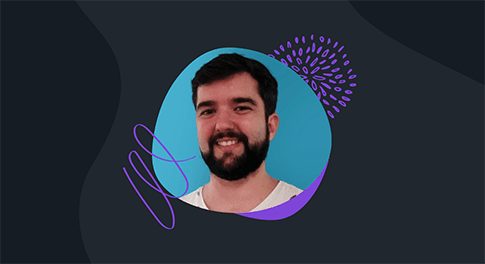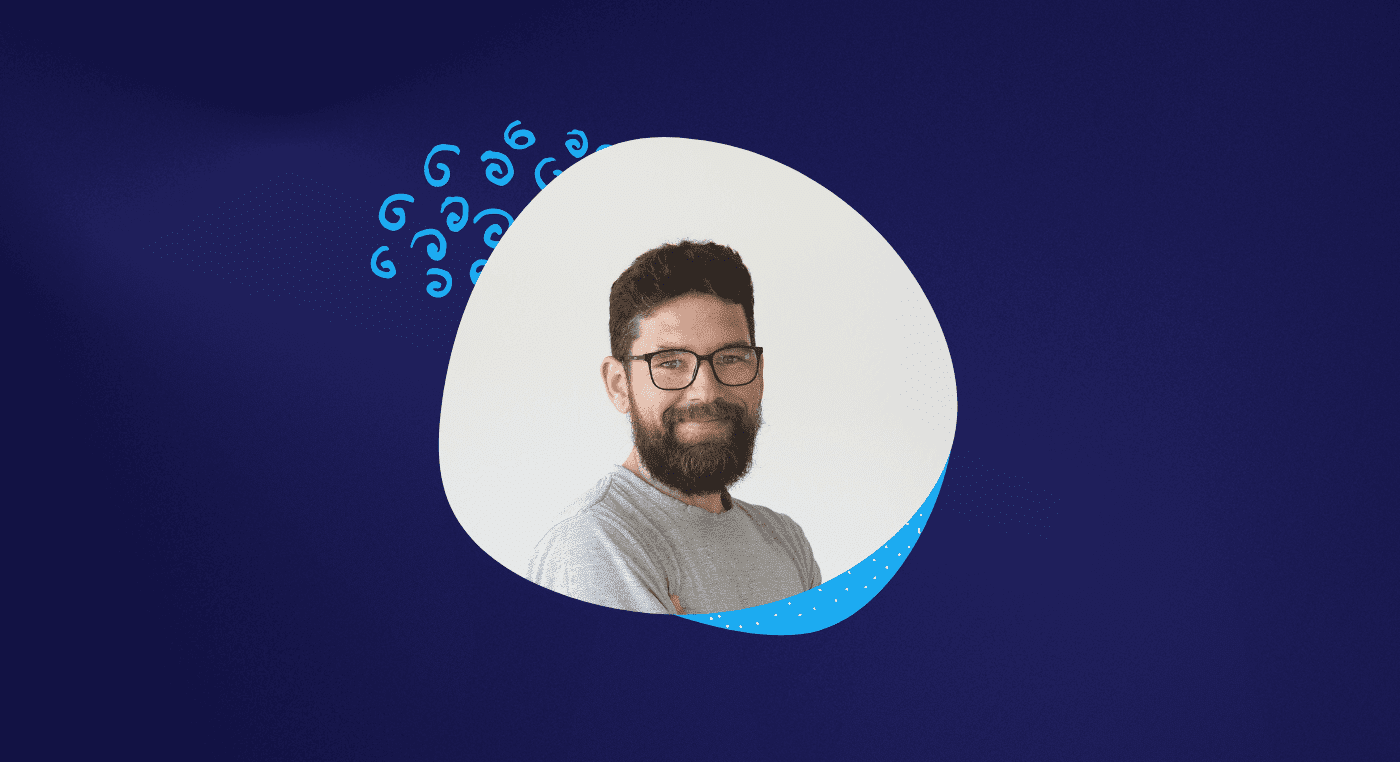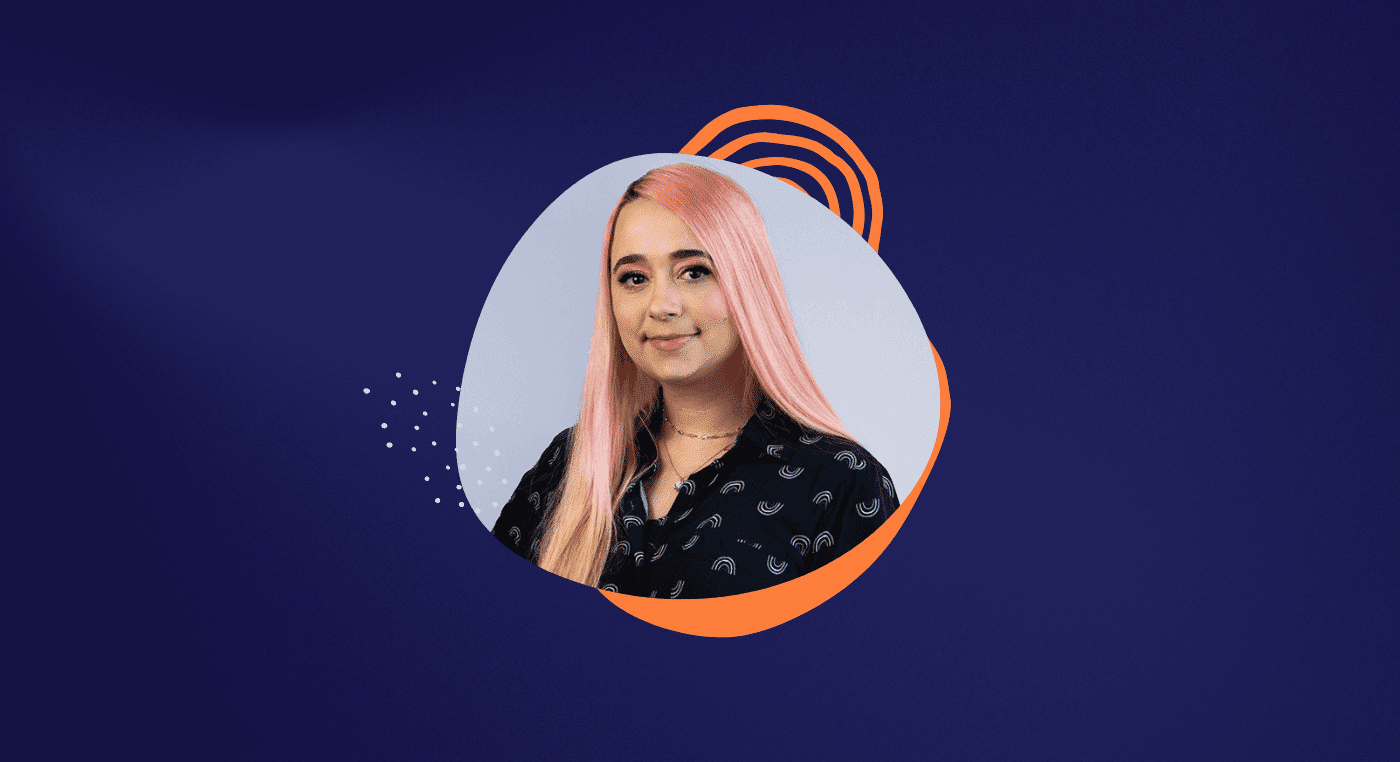We had an engaging conversation with the talented Jean Braga, who generously shared invaluable insights with us.
We delved into his study routine, explored his successful transition from Art Direction to Product Designer, and discovered effective strategies for crafting an impressive portfolio.
Jean also provided a great tip on how to seize job opportunities in the field. Get ready for an enlightening and friendly discussion that will leave you inspired!
Jean, tell us a bit about your background and how was the transition to UX Design
I've been a designer for 10 years and have worked in several agencies, but my transition to UX took place in 2018, and it wasn't easy.
At the time, the company where I worked went through a major crisis, and I was eventually laid off. I saw at that time the opportunity to switch to UX Design.
For some time, I studied UX by myself and explored a lot of free content online. I have always been very careful with my investments, mainly because I am a family man and make every investment for my children.
But I began to analyze the possibilities of taking a graduate course or a free course in UX Design.
That's when I came across Aela. When I analyzed the program in Mastering Interface Design, I had no doubts. I understood that the course was exactly what I needed.
The MID is a complete program, and I had a lot of time and schedule flexibility, so I could study at home without going anywhere physically.
Also, I had already started looking for UX Design jobs during the notice period. I couldn't stay unemployed for too long, and if I went back to the agency, I knew that my transition process would be delayed even more.
So, I gathered some projects I had done, created a few others, and put together my initial portfolio. I included wireframes, what my challenges were, and the whole process of each project. As a result, I landed a job at Claro, where I stayed for two years.
Reading Tip: UX Design and Product Design: Find Out the Difference
You talked about the job search process. What did you do to look for jobs in UX?
I never relied on looking for open positions on websites or LinkedIn, for example. As someone who has worked in agencies, I know how difficult it can be to find opportunities in this market."
So, my approach to getting opportunities was this:
- I would open Google Maps;
- Map all the agencies that existed in a given neighborhood;
- Write down the contacts;
- Call and e-mail them.
In addition, I printed out several copies of my resume and went personally to the door of every company/agency I wanted to work for. I would grab people's attention for 5 minutes and tell them my story.
With this approach, many companies would reply "Wow, we really need a professional like you!" or "Gee, we don't even have any open positions, but let's talk to get to know each other better."
It's certainly a difficult and more demanding approach, but because of that I never relied on waiting for companies to post job openings and opportunities on the Internet. I just went for it!
This made me get many interviews and stand out more because of my motivation and will.

You also mentioned the portfolio. What exactly did you put in it that made the difference in the selection processes and interviews?
As I said, my routine has always been busy, because of my responsibilities with my family and children.
So I decided to invest some time each day to perfect my UX portfolio, right after taking care of my family.
But a very important thing to say is that sometimes you don't need to spend time honing your portfolio down to the smallest detail. I didn't try to make everything perfect. So I would just send the portfolio to the companies.
And it made me realize that there are many companies that actually give you feedback on your portfolio. Even those that don't call you for an interview. This is very important because you have someone else's view on how to improve it. Insights that I would not have had on my own.
Also, a crucial point was to invest time in describing the processes of the UX projects.
In this sense, in a project in my portfolio, I described the whole brainstorming process, how I developed the wireframes, and how their approval process went.
The idea was to demonstrate the challenges, how I overcame them, and what I learned.
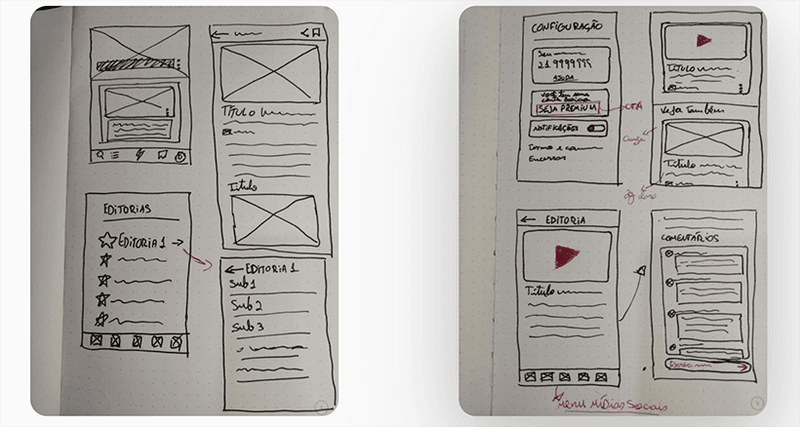
Reading Tip: UX Design Portfolio: 6 Essential Tips for Building Yours
You also talked about how you had limited time for your studies. How did you adapt?
This question varies from person to person. I think everyone has to find the best method for themselves.
In my case, I started studying UX by myself in 2012/2013. At that time, I already had a son. So at that point, my time was already very much divided.
In that sense, I started to use all the small breaks of time I had to study. For example, before going to sleep I would consume some type of content, even on my cell phone.
Also, I started to wake up at 5:30 in the morning and study until 7:30, which was the time I had to leave for work. I did this for two years!
And it was because of this routine and adaptation that I was discovering what worked for me. And what works for me to this day is to study in the morning, when it is quieter, I am in a better mood, and my wife and kids are still sleeping.
I even used to study the MID during this time, very early in the morning!
Time management is really important, not only for studying but for any area of our lives.
Yes, for sure!
And studying by distance learning is really hard. We start out excited, but then we lose the momentum. But it is important to always remember that investing in your studies is a long-term thing.
All the hours I invested in my studies, in the morning and all the hours I missed seeing my relatives and friends are being rewarded now. With my transition to UX, a new career, and so on.
Time is our currency.
By the way, a piece of advice for those starting out in the MID: have patience and consume the content slowly and in a planned manner.
It is very common to start the program eager to learn everything very quickly, but it is not possible to absorb everything at this pace. You have to do it little by little.
Also, use the community of students, and ask your questions there. Take advantage of these channels to improve yourself and clarify any questions you may have!
And how was the transition process from Claro to Descomplica?
It was pretty quick, actually. The process at Descomplica lasted about a month!
During this period, I applied for the position, talked to the Lead and HR and the team, showed my portfolio, and was approved. In other words, the speed was amazing!
It all started on LinkedIn, where I applied for the job. But, keeping that running-after mentality in mind, I didn't stop there and sent a direct message to the UX Lead, making myself available and indicating my portfolio links.
With that, I got a 30-minute conversation with the Lead. He called me to present the case to him and then to the rest of the team.
I made a very realistic presentation. The idea was not to show a perfect case, but to show the real problems I went through and how I managed and dealt with them.
I had a lot of depth in the processes, so I could answer all the questions and issues that the interviewers asked me about the workflow.
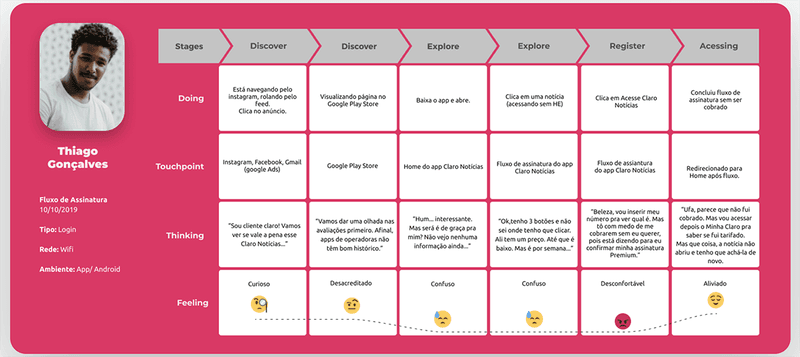
Reading Tip: How to Pivot Into a UX Design Career: 10 Initial Steps
And what is it like to be a UX Designer at Descomplica?
Because of the pandemic and the quarantine, this has been a little slower than usual. We are working remotely, so the interactions are less spontaneous.
But the teams, from what I can see so far, are set up to work in an agile environment. In this sense, they have a UX Designer, a PM, and a team of developers to handle the tasks.
I already feel that everything is very organized. We have one tool for roadmap management and another tool for task management. So, everything is very aligned.
Another interesting point is the transparency of the company. In general terms, anyone can request information about the month's invoicing, for example. I realize that Descomplica is a company that strives for knowledge dissemination. Which is very good!
Moreover, we have several alignment meetings, with peers, developers, the director of the area, and with the founder himself – Marco Fisbhen.
The idea is to keep everyone aligned with the current projects and to exchange ideas and suggestions.
It has been a very cool experience!
How has the remote onboarding process been with the quarantine?
I confess that I was even afraid that my hiring would be canceled since it was right at the beginning of everything.
But as it was an already planned and essential position, there was no possibility of it being canceled.
In the beginning, I had several meetings with HR, even online. And I watched several onboarding videos, talking about the company, the daily routine, etc.
The coolest thing is that the videos were edited and produced in a very casual way. I found it very interesting and I have to confess that I think this initiative is crucial for any company that wants to do this process of getting the employee introduced to the company.

What are your plans for the future?
Today, I still have doubts that I already have the skills and abilities to be a leader or a manager in the future.
But instead of working with these possibilities, I prefer to work with what is real today, with what is happening now.
I believe that I can become a Senior UX Designer in a short time. I believe in my capacity to learn and absorb content.
So, I think my evolution will follow this process in a more natural way because I am already used to studying hard and learning fast.
To wrap up, what would you say to Jean from the past?
I would definitely tell him to invest more in the English language. It is essential knowledge in the area, even if you are working in a non-English speaking country.
A lot of quality content is still available only in English and there are no translations.
And I feel that if I had more knowledge of the language, I would have been able to learn much more and faster.
Another thing I would say to Jean in the past is, "You still don't know anything about UX Design!"
I had a completely different view of the field, so I guess I would give myself that tip; to always keep studying.
And a tip I can give to anyone who is studying UX is not to rely only on theoretical concepts.
In this field, practice is very important. It is what makes us associate the content.
So, practice exercises, cases, etc. This practical part is indispensable!
Reading Tip: 11 Reasons that Make the MID an Incredible UX/Product Design Program
A short update
The interview above happened at the beginning of 2020. Shortly after, Jean received a new proposal and left for his third professional challenge as a UX Designer, at Biz Capital. We wish him lots of success in this new challenge!

